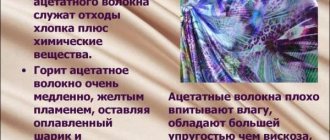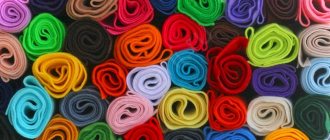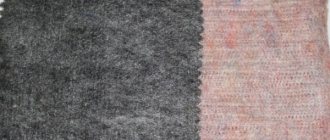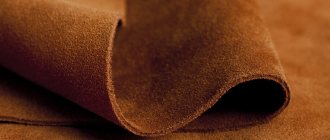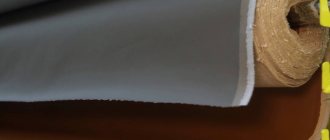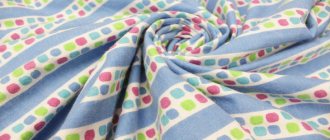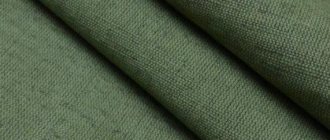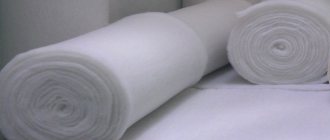What type of fabric is this?
Calico is a natural fabric produced by plain weaving untreated cotton fibers. It has a simple weave of cream or gray shade, rough to the touch.
This textile does not have a very attractive appearance, so this fabric is transformed into more beautiful types. How are canvases produced? First, raw cotton is collected and then dried. Chemical treatment at cleaning stations dyes these fibers, creating a more attractive appearance.
As a result, cotton yarn is obtained, which is then woven on looms. At the final stage, the fabric undergoes impregnation, thermofication, as well as drying and ironing.
Description of calico fabric. Types of material
Calico is made by plain weaving cotton threads from medium-thick (15.4 - 18.5 tex) carded yarn. The relative density for the warp is 53-54%, for the weft – 42-43%. The surface density of the fabric is 101-103 g/m2. Compared to calico, which is produced in a similar way, calico has less weight and density.
Calico
The fabric is produced:
- unbleached;
- bleached;
- plain-colored;
- with various treatments.
Each type of material has its own characteristics and areas of application.
- Unbleached calico fabric does not have a very presentable appearance; it is used in cleaning as a cleaning, packaging material, and the basis for producing leatherette, oilcloth, and calico. This type of calico can be used to make templates when creating clothing models.
- We learned to bleach calico a long time ago. The fabric refined in this way was used mainly for sewing linen: shirts, caps, petticoats, shirts. Now the level of consumer demand has increased significantly, so bleached calico for linen is used less frequently, mainly for sewing uniforms, simple bed linen, and as a basis for embroidery.
- Smoothly painted calico looks quite nice. Depending on the color, the material had and has different names. Red calico was called calico. For obvious reasons, the color red was close to all of us, so the word “kumach” is well known. The word itself means bright red. Over time, the name was assigned to the bright red fabric. By inertia, red linen fabrics made in the same way were sometimes called red.
Several methods of processing calico are used.
- If a design is applied to calico by printing, the result is chintz. You can learn about the characteristics of chintz in the corresponding article on the site.
- If calico is painted using a stencil, the result is cretonne. The fabric has been known for a long time. Now it is used for the production of bed linen, furniture covers, and car seats.
- The bleached fabric can be mercerized and then lightly finished. This is how muslin is obtained, from which light clothing, curtains, and bedding sets are sewn.
- If finishing is carried out with concentrated solutions, the fabric becomes stiffer. This type of calico is called madapolam. Thin, hygienic material is indispensable for making baby vests, clothes, diapers, and bedding.
We talked about how calico is made from calico in the corresponding article on the site. Materials: leatherette, oilcloth are not the subject of our interest.
Types of fabric
Types of calico:
Severe
Untreated fabric with a cream or grayish tint. May contain cotton debris. Application: making rags for cleaning, making a base for thick oilcloths.
Bleached
The processing of harsh calico consists of bleaching it, as a result of which a snow-white fabric appears. White material treated with a special caustic compound. Application: for sewing bed linen, shirts, and previously wedding dresses.
Painted
Canvas processed in different shades. A design printed on canvas creates chintz, while dyeing creates cretonne. Application: for sewing special uniforms, kitchen textiles, etc.
Calico material
The main material for making calico is thin or semi-fine carded cotton yarn. Unbleached fibers are woven in a simple plain manner. The natural color of the calico fabric is grey. This material is considered the basis for various products. Processing this fabric skillfully transforms textiles; simple processing of calico (by bleaching) allows you to obtain a new snow-white fabric. A pattern printed on fabric leads to the appearance of chintz, while dyeing leads to the creation of cretonne. In addition, as a result of dyed and starched material, calico appears. At the same time, the dyed and polished fabric is finished, thus creating a crispy madapolam and a very pleasant to the touch and soft muslin. It should be noted that calico is also considered calico, but has thicker fibers, and the weft threads are thicker than the warp threads.
Advantages and disadvantages of serpyanka
Like any material used in construction work, fabric serpyanka has its pros and cons.
Advantages:
- Affordable price;
- Ease of use;
- Strengthening the joining seam of sheets;
- Resistance to aggressive environments;
- High vibration tolerance;
- Good level of grip.
Flaws:
- Medium level of strength;
- Selection of a special putty solution.
Application area
Severe calico is an “unrefined” raw material that is widely used in everyday life. Usually the material is used to make rags for cleaning, and also as packaging material. It is also used as a bottom layer for oilcloths, leatherette or calico. It is often used as a template when creating new clothing models.
Fabric is the basis for the manufacture of other materials that have more advanced unique properties. For this purpose, bleached calico is used, which is often dyed and given different names depending on the color. For example, red material used to be called kumach, and blue material was called kindyak.
Many things were made from white linen - shirts, caps, shirts. But customer demands have increased and now it is used only for sewing simple bed linen - pillowcases, sheets, duvet covers. And also for the production of uniforms used in construction. For example, the palm pad of work mittens is sewn from calico.
The material is also used for embroidery. Calico canvas is used in the textile industry to develop appliqués and prints.
Types and their properties
The fabric has several varieties. According to the degree of coloring, calico is distinguished:
- unbleached harsh;
- bleached;
- plain-colored;
- with patterns of different application methods.
Drawings on fabric are created in 2 ways, which are called:
- printed - the printed image is applied on top of white or dyed fabric (this option is often used on chintz);
- Creton - the canvas is made from pre-dyed fibers (it costs more).
A special type of technical fabric is filter fabric . Used in the production of solutions in the chemical, food, and medical industries.
Severe calico has several processing methods that affect its characteristics:
A little history
The word itself apparently came from the Persian language. Studying ancient documents, scientists discovered the term “metkal”, which denoted a gold coin, as well as a unit of weight. They probably also denoted the cost or weight of a certain amount of material (it was in use on the market, along with money). Subsequently, the designation was successfully transferred to the fabric itself. The origin of coarse cotton fabric with simple plain weaving is also associated with the East.
In the Middle Ages, the production of such textiles was well developed in England. It appeared in Russia in the seventeenth century (together with cotton). However, production of fabric on an industrial scale became possible only a hundred years later.
Interesting fact: Some names of processed calico have survived to this day. The red material is called “kumach”, the blue one is called “kindyak”. The pattern applied to white or blue material was called “printed” or “punched out”.
Application and care
Calico fabric that has not undergone bleaching is used mainly for technical purposes. It is used as an inexpensive and hygroscopic textile for cleaning, cleaning rags, packaging material, and a base for artificial leather and oilcloth . Workwear and accessories (mittens) are also made from it.
Linen is the favorite material of embroiderers. Bed and table linen and white uniforms are also made from it. Chintz is one of the most common and versatile summer fabrics. It is used primarily for summer clothing and as home textiles. The same can be said about madapolam and muslin fabrics. Plain smooth calico is now almost out of use.
When planning to sew something from calico-based materials, you need to remember about their strong shrinkage.
Before cutting, the fabric must be wetted, then dried and ironed, and when cutting, leave large seam allowances. But the sewing process will not cause big problems, and novice dressmakers are recommended to master their skills using such materials. As for washing, it can be done in machine mode at a temperature of no more than 60 degrees. In order for dresses and curtains to look beautiful, it is recommended to starch them (with the exception of muslin). It is better to wash colored items separately and dry them out of the sun. Ironing is done in the cotton mode, it is desirable that the products are slightly damp.

